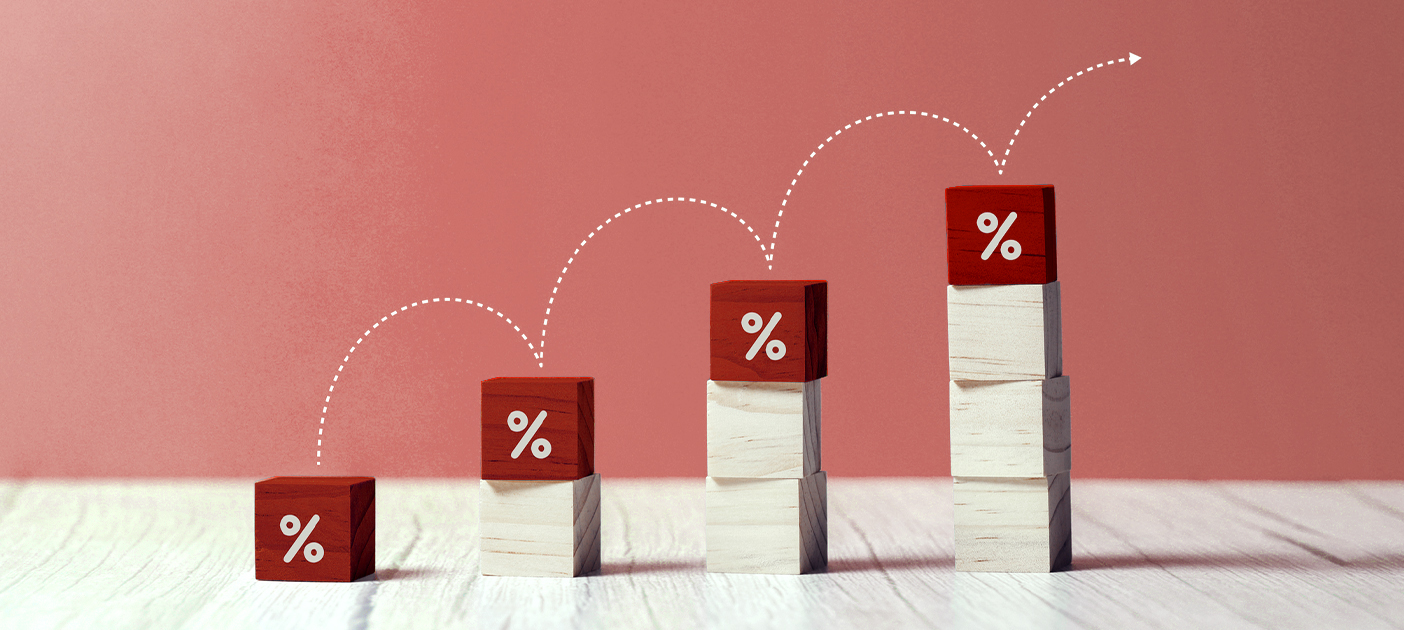Is my CPF enough to beat inflation?
By Lorna Tan
![]()
If you’ve only got a minute:
- It is timely to review if our CPF LIFE monthly payouts would be sufficient for our desired retirement lifestyle and explore how we can further maximise CPF schemes for higher future payouts.
- To be better prepared and to boost our financial resilience, relying solely on our CPF for retirement will not be sufficient especially if high inflation persists.
- Beyond optimising CPF schemes, we should consider investing our surplus savings into instruments that can generate income flows to fund our needs and wants in our golden years.
![]()
With Singapore's elevated inflation this year, we might be wondering if our Central Provident Fund (CPF) savings are enough for our golden years.
Most of us have experienced how inflation has eroded our purchasing power. With the same amount of savings, we can buy fewer goods and services over time. To make matters worse, not everyone’s wages have kept up with inflation.
In May 2022, DBS’s research report “Are you losing the race against inflation?” indicated that income had lagged behind inflation for 40% of 1.2 million DBS retail customers, and that increase in expenditure has outpaced income growth by 2 times.
Based on DBS's research paper in July 2023, “Between a rock and a hard place”, things have since improved for most of us. While this may be the case for most, vulnerable groups (like the elderly and low-income customers) continued to see their expenses grow faster than their income.
As such, it remains pivotal to plan for our retirement intentionally so as to be able to enjoy the same desired lifestyle.
To recap, the CPF is a key pillar of Singapore’s social security system, and serves to meet our retirement, housing, and healthcare needs. Our CPF Ordinary Account (OA) savings earn up to 3.5% pa interest, while our Special Account (SA) balances earn up to 5% pa which helps to keep up with inflation. For members who are aged 55 and above, their CPF Retirement Account (RA) savings attract up to 6% pa interest.

To provide CPF members with higher monthly CPF payouts in their retirement years, given the rising standards of living, the CPF Retirement Sums would be raised by 3.5% p.a. for the next 5 cohorts of CPF members turning 55 from 2023 to 2027.
For CPF members who are nearing retirement or have started withdrawing their CPF savings, they should be aware of the impact of inflation on the purchasing power of their CPF LIFE payouts. In particular, younger CPF members can leverage their long-time horizon to grow and reap the benefits of compounding on their CPF monies.
Under the national annuity scheme CPF LIFE, there are 3 plans that offer lifelong monthly payouts to participating members. The CPF LIFE Standard Plan offers a level monthly payout which means you may afford less in the future, as things get more costly in the years ahead. As the payouts are not inflation-hedged, do ensure that you have other sources of income to supplement your CPF LIFE payouts.
If you're concerned about the rising cost of living, the Escalating Plan may be suitable for you as it offers monthly payouts that increase by 2% annually for life. However, do note that the initial monthly payout will be 20% lower than that of the Standard Plan. One way to mitigate this is to top-up your RA savings or defer your payouts till later.
By reviewing our retirement needs early, we can gain clarity on how the gaps can be closed for a greater peace of mind.
Read more: Between a rock and a hard place
Making better use of CPF to prepare for retirement
The higher the amount we can set aside in the CPF Retirement Account (subject to the prevailing Retirement Sums), the higher our future CPF LIFE payouts would be. So, it is worth performing top-ups to our CPF accounts to boost our nest egg. CPF Retirement Sums increase annually to keep up with inflation and higher standard of living. Other ways of growing our CPF savings include investing them wisely and deferring the CPF LIFE payouts.
Here are 5 ways to grow our CPF savings.

1. Topping up your CPF accounts
If you are age 55 and above, and wish to receive higher CPF LIFE payouts, you can top up your RA to the prevailing Enhanced Retirement Sum (ERS) each year with either CPF savings or cash under the Retirement Sum Topping-Up (RSTU) Scheme.
Assuming you are 55 in 2024 and have the ERS amount of S$308,700 in your RA, you will receive a monthly CPF LIFE payout of S$2,260 to S$2,430 under the CPF LIFE Standard Plan, when you turn 65. You can continue to top up to the prevailing ERS in subsequent years to get higher monthly payouts later.
When calculating how much you can top up to your RA each year, ignore the interest component. For example, if you already have the ERS of S$298,000 (excluding interest) in your RA in 2023, you can top up another S$10,700 into your RA in 2024 to hit the prevailing ERS of S$308,700.
Members below age 55 can top up their SA up to the prevailing FRS of S$205,800. Cash top-ups to your CPF account up to the prevailing FRS can result in a potential tax relief of S$8,000.
2. Topping up family members’ CPF
If you want to help your spouse build up his or her retirement savings, you can transfer CPF savings above your cohort’s Basic Retirement Sum (BRS) to him or her. Members can make top-ups to parents and grandparents by transferring their balance CPF savings after setting aside their cohort’s BRS with sufficient property charge to make up their cohort’s BRS.
The recipients will benefit from the extra interest that will be paid in the respective accounts and there will be greater peace of mind as they will have their own source of retirement payouts.
Do note that only cash top-ups qualify for tax relief. So if you perform these top-ups with cash instead of CPF transfers, you stand to potentially enjoy another tax relief of up to S$8,000 while your spouse and/or parents earn attractive CPF interest too. There is no tax relief for top-ups beyond the prevailing FRS each year, and there is a personal income tax relief cap of S$80,000.
Read more: Boosting personal income tax savings

3. CPF Voluntary Contribution Scheme
To enjoy the attractive CPF interest rates while growing your nest egg, you can consider the CPF Voluntary Contribution (VC) Scheme – the “VC-3A” scheme – to top up monies to your 3 CPF accounts (Ordinary, Special and Medisave Accounts), subject to an annual limit of S$37,740.
This annual limit takes into account both mandatory and voluntary contributions. The maximum amount of voluntary contribution to the 3 CPF accounts that you can make this year is the difference between the CPF Annual Limit (S$37,740) and the amount of mandatory contribution received for the year.
The excess contribution above the CPF Annual Limit will be refunded without interest from your voluntary contribution payment. Use the CPF Contribution Allocation Calculator on the CPF Board’s website to find out how much is allocated to each of the 3 CPF accounts.
4. Investing CPF savings
The CPF Investment Scheme (CPFIS) lets you invest your OA and SA savings in a wide range of investments to enhance your retirement savings. You can invest under CPFIS if you are at least 18 years old, not an undischarged bankrupt and hold more than S$20,000 in your OA.
However, do bear in mind that there are no guarantees in investing. Do your due diligence and understand your risk profile and the investment before making an informed decision. If you are investing with your OA savings, ask yourself if the investment can deliver a better outcome than the 2.5% pa CPF-OA interest. If you choose to do nothing, at least the 2.5% return for OA monies is guaranteed.
Read more: Do more with your CPF
Find out more about: CPF Investment Account

5. Delaying CPF LIFE payouts
If you don’t need your CPF LIFE payouts at age 65, you can choose to start receiving them any time between 65 and 70. The latest you can start your payouts is at age 70. The benefit of deferring your payouts is that you will earn more interest on your CPF savings.
For each year that you defer, your payouts will increase by up to 7%. This means that if you defer for 5 years, that’s up to 35% more.
Comparison of CPF LIFE payouts
|
Start payout at age |
Monthly payout for life (S$) |
|---|---|
| 65 | 820 - 880 |
| 66 | 880 - 940 |
| 67 | 920 - 990 |
| 68 | 980 - 1,060 |
| 69 | 1,020 - 1,110 |
| 70 | 1,090 - 1,180 |
Source: CPF Board
Note: Payouts are estimates based on a member who has set aside the BRS of S$102,900 at age 55 and CPF Life Standard Plan payouts computed as of 20241.
Determining if CPF payouts are enough
1. Reviewing CPF LIFE payouts
Our CPF enables us to set aside retirement funds to at least provide for the basic needs during old age. In a high inflationary environment, we need to be aware that our purchasing power will erode faster over time.
It is timely to review if our CPF LIFE monthly payouts would be sufficient for our desired retirement lifestyle and explore how we can further maximise CPF schemes for higher future payouts. For CPF members between ages 55 and 79, you can estimate your CPF LIFE monthly payouts using the CPF LIFE Estimator Calculator1 on CPF Board’s website.
For CPF members aged below 55, you can estimate your CPF LIFE monthly payouts with “Your CPF” in digibank.
Monthly payouts at age 65 under CPF LIFE Standard Plan for members who turn 55 in 2024
|
CPF Retirement Sums |
Amount set aside at age 55 (S$) |
Amount set aside at age 62 (S$) |
|---|---|---|
| Basic Retirement Sum (BRS) | 102,900 | 820 - 880 |
| Full Retirement Sum (FRS) | 205,800 | 1,540 - 1,650 |
| Enhanced Retirement Sum (ERS) | 308,700 | 2,260 - 2,430 |
The BRS takes reference from a person's expenditure from a lower-middle retiree household, according to the latest Household Expenditure Survey. It assumes that the member owns a property that can last him up to 95 and he does not need to pay rent in retirement.
The FRS and ERS are set at 2 and 3 times of the BRS respectively. In a nutshell, the more we can set aside in our RA, the higher our monthly payouts will be in the future.
To be better prepared and to boost our financial resilience, relying solely on our CPF for retirement will not be sufficient especially if high inflation persists. My advice is to optimise our CPF savings by leveraging the attractive risk-free interest rates of the SA and RA, which offer up to 6% pa.
Beyond that, we should consider investing our surplus savings into instruments that can generate income flows to fund our needs and wants in our golden years.
2. Stress-testing our financial plan
Stress-testing our finances is another way to identify and close any retirement gaps early. Most financial plans assume an inflation rate of 2% - 3% when projecting future income flows to determine retirement adequacy.
Plan for higher costs of living by assuming different inflation scenarios of 3%, 4% or 5% and work out how these different rates impact your future cash flows and retirement planning.
Plan and Invest is a digital financial planning tool housed in your digibank app. It allows you to stress-test your financial health against rising costs, inflation, and unexpected situations. Armed with this knowledge, you can then make any necessary adjustments.

Read more: Let’s get better at money: Beyond budgeting
Find out more about: Plan with digibank
3. Diversification
It’s an interesting time for investors as there is an increasing number of investment options in the market such as multi-asset income funds, retirement income insurance plans, dividend-paying blue-chip stocks, unit trusts, and real investment estate trusts (Reits).
A diversified portfolio can also include multi-asset funds that offer regular income payouts. For instance, Schroder Asia More+ is a multi-asset fund with three share classes to choose from, to help you achieve your objectives. Depending on your needs and time horizon, you can choose to re-invest potential dividends and capital gains back into the fund or start receiving income distributions with intended payouts ranging from 5% to 6.88% pa.
In recent years, retirement income insurance plans have been popular as they provide monthly payouts to supplement retirement cashflows for a defined period. Some start their payouts within 5 years from policy inception. There are also immediate annuities that pay out immediately.
RetireSavvy is a flexible retirement income insurance that allows you to defer your retirement age, adjust your income payout period, gives flexibility to do premium top-ups and adjust your retirement income rate (apportion part of income to be disbursed as lump sum upon retirement).
For the more liquid portion of a portfolio, consider including higher interest-yielding savings accounts like DBS Multiplier Account, Singapore Savings Bonds, Green SGS Infrastructure Bonds, money market funds, and short-term endowment plans.
Read more: Is DCA or lump-sum investing better for you?
Find out more about: Retirement digiPortfolio
Ready to start?
Start planning for retirement by viewing your cashflow projection on Plan tab in digibank. See your finances 10, 20 and even 40 years ahead to see what gaps and opportunities you need to work on.
Speak to the Wealth Planning Manager today for a financial health check and how you can better plan your finances.
Source:
1 CPF Board, CPF LIFE Estimator, retrieved 11 Jan 2024.
Disclaimers and Important Notice
This article is meant for information only and should not be relied upon as financial advice. Before making any decision to buy, sell or hold any investment or insurance product, you should seek advice from a financial adviser regarding its suitability.








That's great to hear. Anything you'd like to add? (Optional)
We’re sorry to hear that. How can we do better? (Optional)